Solidago sempervirens – Seaside goldenrod
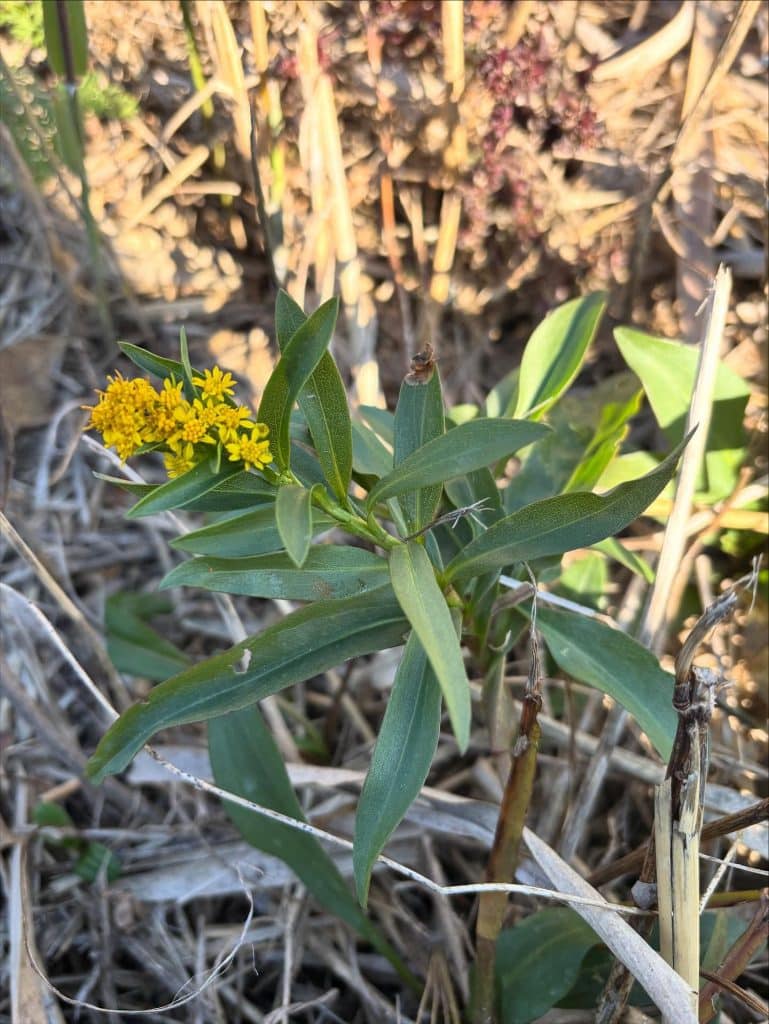
Seaside goldenrod (Solidago sempervirens) is a native perennial that can be found along the coast. It prefers full sun and sandy soils. Seaside goldenrod has waxy, somewhat succulent leaves. It produces yellow flowers in a pyramid shape from August-October. Seaside goldenrod produces larger flowers than other goldenrod species. Flowers are edible. They have a floral […]
Phragmites australis – Common reed
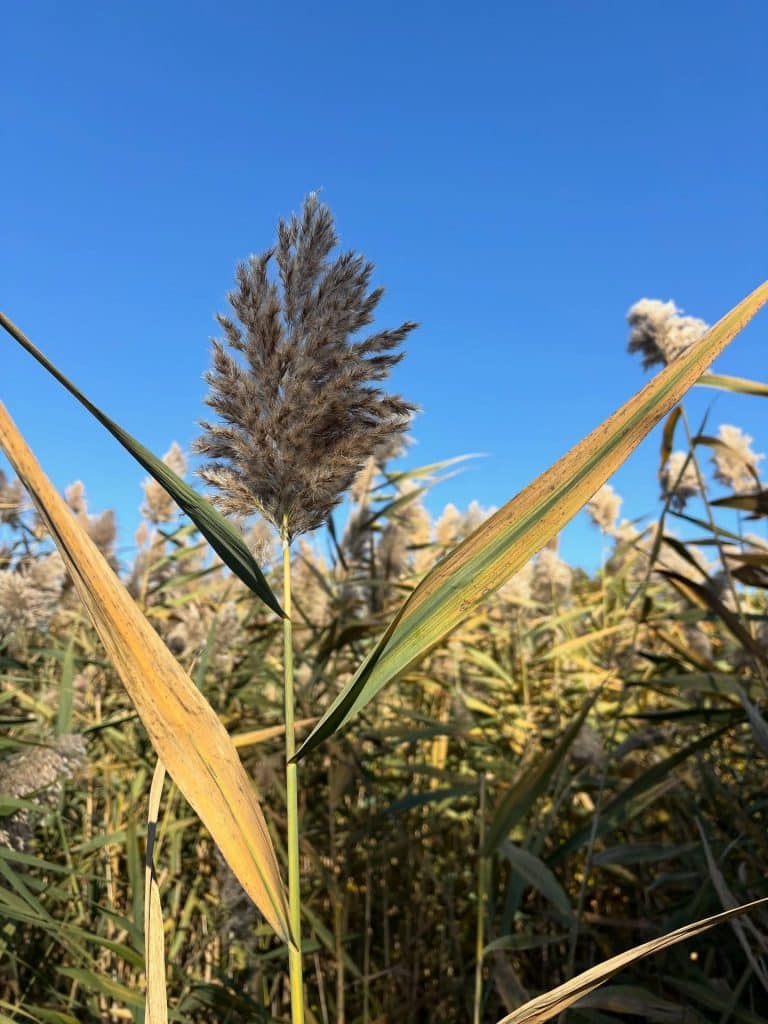
Common reed (Phragmites australis) is an edible perennial wetland grass. There is a native and non-native variety. Common reed is often found growing in dense clumps at the edge of water. The plant can be identified by its grayish-green lanceolate leaves. It produces dark purple flower spikes in late summer, which fade to brown in […]
Celastrus orbiculatus – Oriental bittersweet
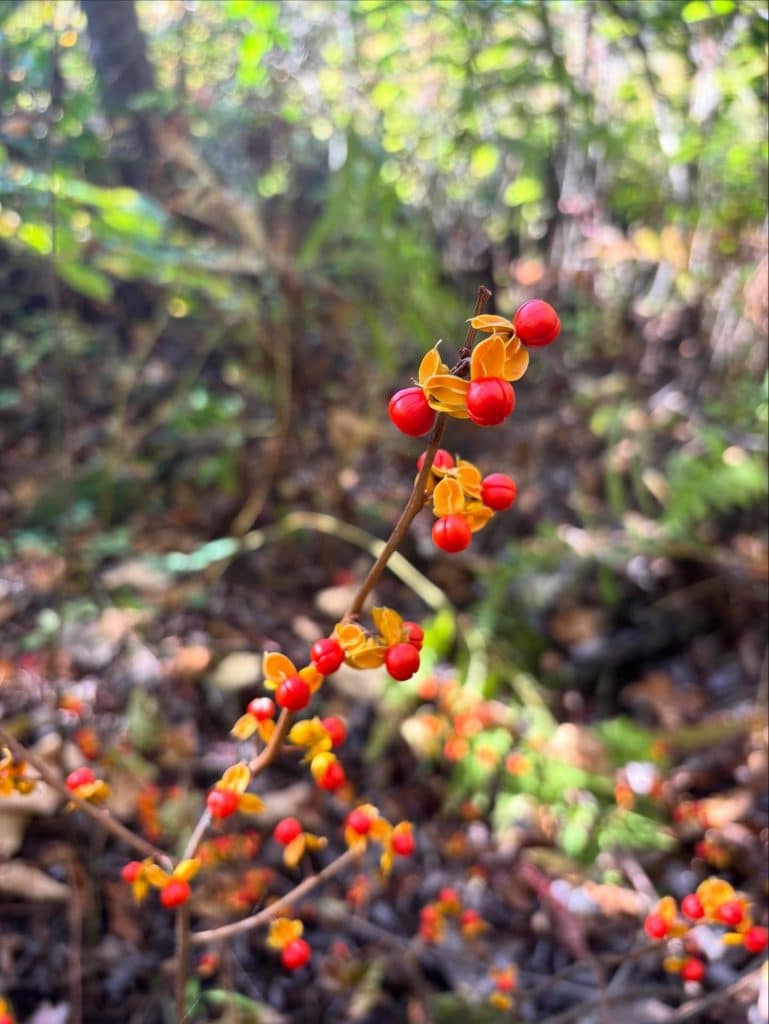
Oriental bittersweet (Celastrus orbiculatus) is an invasive and toxic vine. It can be found climbing up autumn olive shrubs and confuse people for autumn olive berries. The plant was brought to the U.S. for ornamental use but has escaped cultivation and chokes out native plants. Oriental bittersweet is a perennial vine with alternate toothed leaves. […]
Elaeagnus umbellata – Autumn olive
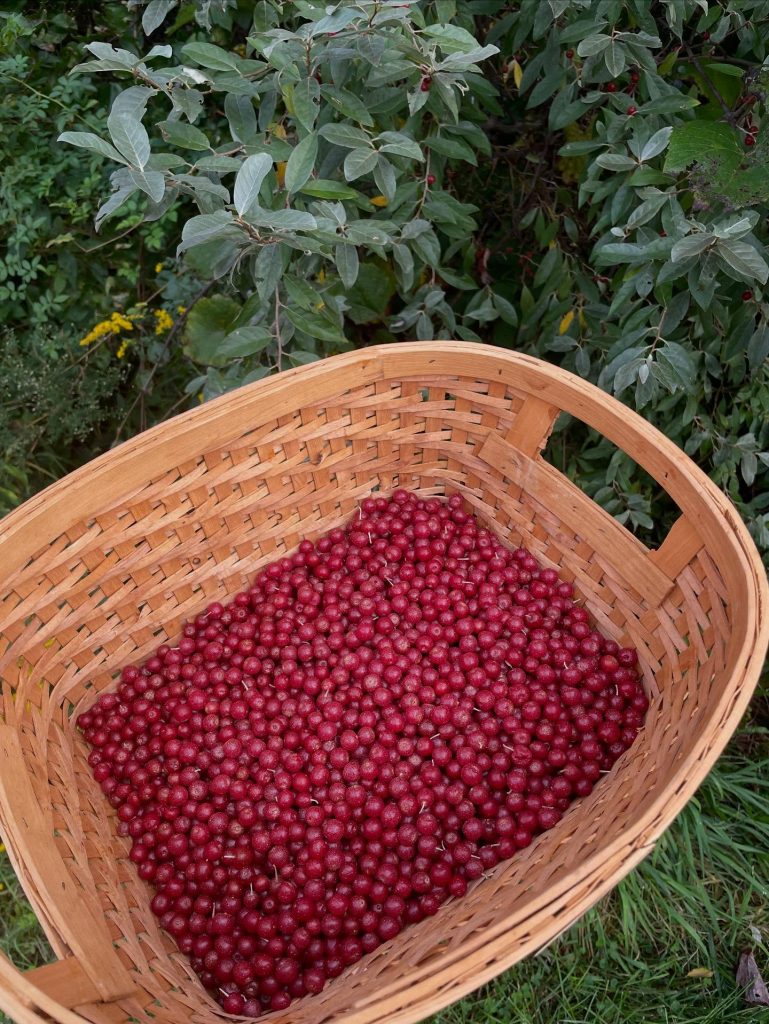
Autumn olive (Elaeagnus umbellata) is an invasive shrub/small tree that produces nutritious and delicious berries in the fall. Autumn olive can be found in areas with full sun and poor soil. They are nitrogen fixers so can grow in almost any environment. The plant has leaves with silvery, speckled undersides. It produces small creamy yellow […]
Eurybia divaricata – White wood aster
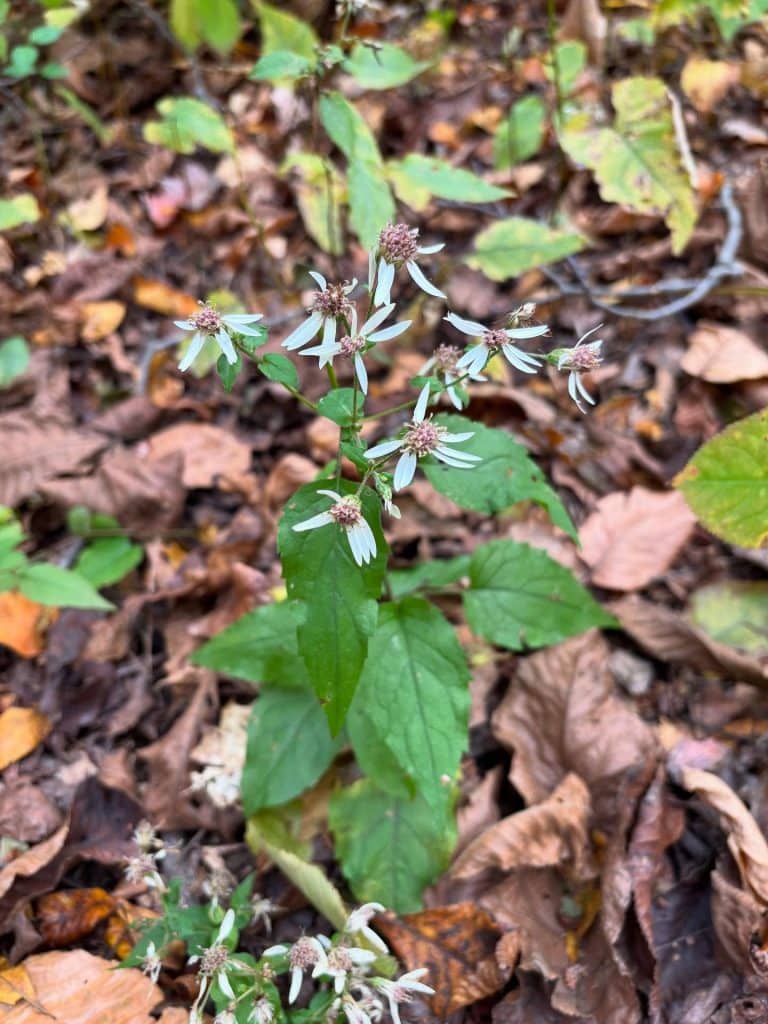
White wood aster (Eurybia divaricata) is a native perennial with edible and medicinal uses. White wood aster can be identified by its heart-shaped leaves with serrated edges. The plant produces clusters of small white flowers with 10 petals and a yellow center late summer-fall. Young leaves in the spring are non-toxic and can be consumed […]
Galium mollugo – Hedge bedstraw
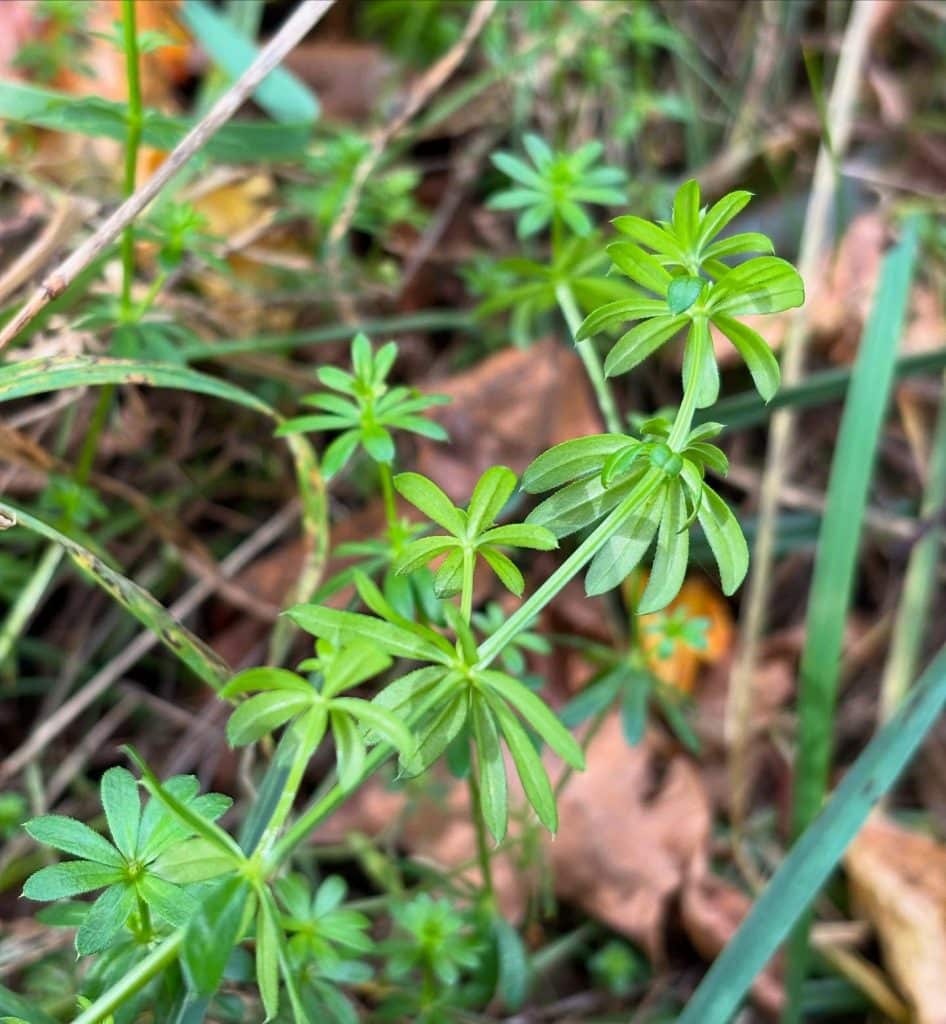
Hedge bedstraw (Galium mollugo) is a non-native perennial with edible uses. Hedge bedstraw can be found in fields and farms. Hedge bedstraw can be identified by its smooth stems and leaves that are in whorls of 6-8. Small white flowers are produced in the summer. The young shoots or top few inches of older stems […]
Cryptotaenia canadensis – Canadian Honewort

Mitsuba/Canadian Honewort (Cryptotaenia canadensis) is a native, edible perennial in the carrot family. Canadian honewort can be found in woodland areas with partial to full shade. It has toothed leaves that are divided into three leaflets. The stem creates a sheath at its base. The plant has a carrot-like scent when crushed. Umbels of white […]
Symphyotrichum novae-angliae – New England Aster
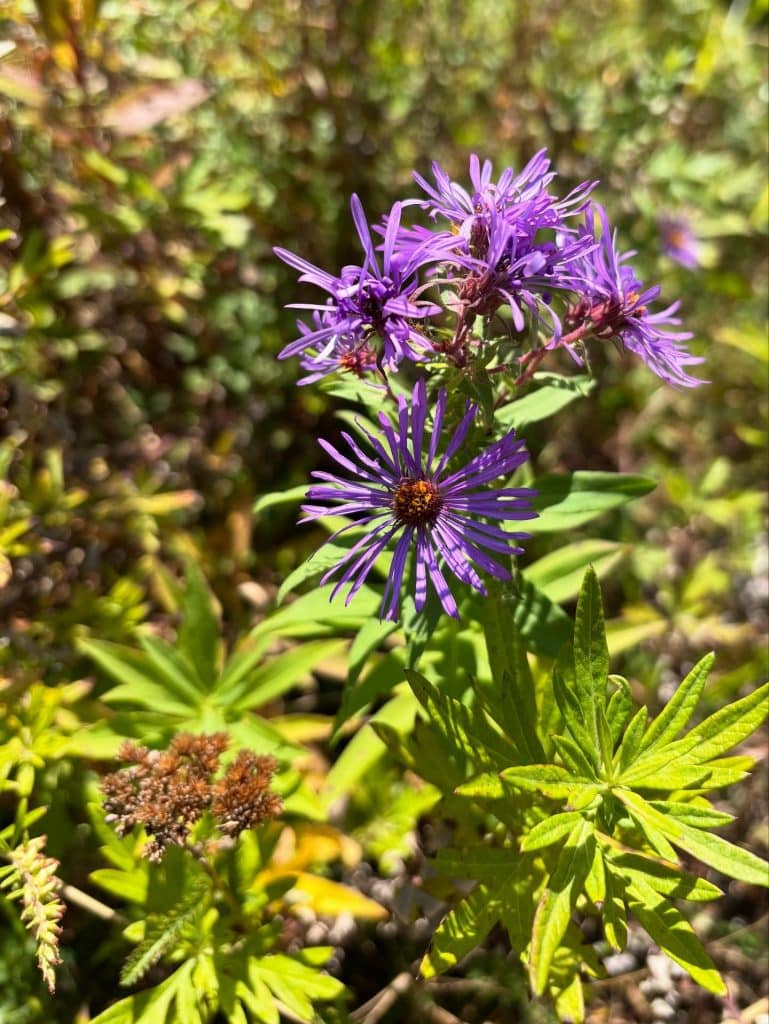
New England aster (Symphyotrichum novae-angliae) is a native perennial with late blooming flowers. New England aster can be found in open, sunny areas such as meadows and fields. New England aster is easiest to identify in the fall when it produces pale lavender to purple flowers with yellow centers. Stems and leaves have a […]
Helianthus tuberosus – Sunchoke
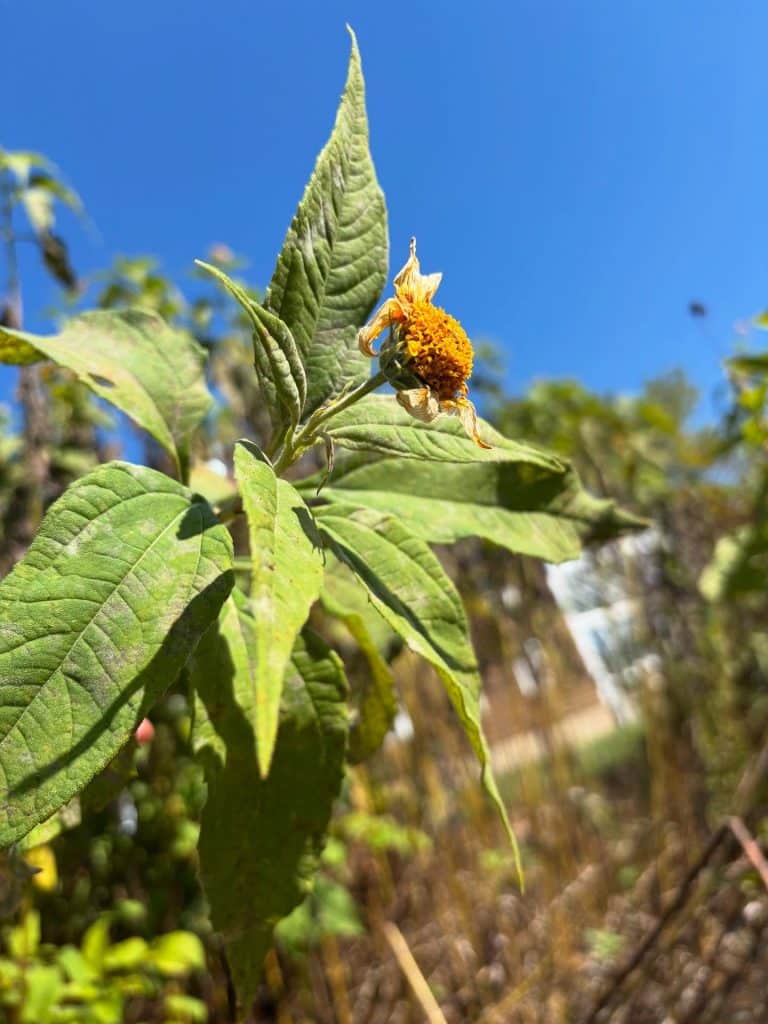
Sunchoke (Helianthus tuberosus) is a native perennial sunflower with edible tubers. Sunchoke, also known as Jerusalem artichoke, can be found in river floodplains and meadows with partial to full sun. Sunchokes grow up to 12 feet tall. Leaves and stems have a tough texture. Flowers have 10-20 petals and bloom August-September. Tubers are reddish to […]
Hypholoma fasciculare – Sulfur Tuft
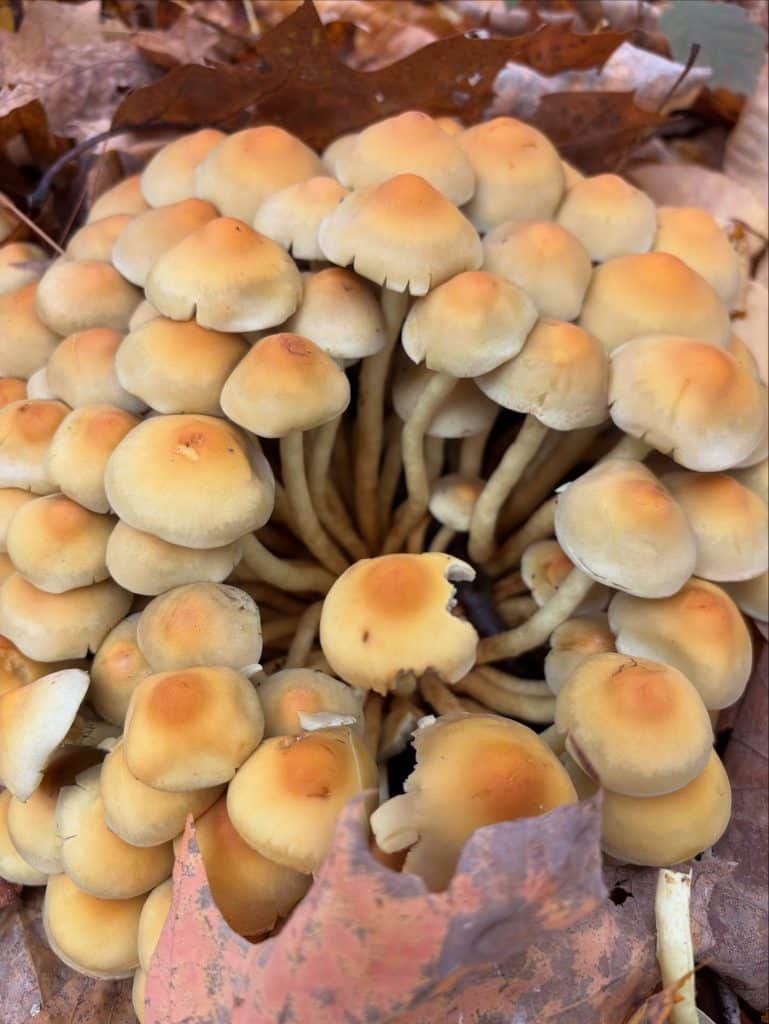
Sulfur tuft (Hypholoma fasciculare) is a toxic look alike to the edible brick cap mushroom (Hypholoma lateritium) and honey mushrooms (Armillaria spp.). It can be found April-November on decaying hardwoods and conifers. The mushroom grows in dense clusters with converging stems. The cap is a sulfur yellow color with whitish edges. Gills are covered by […]
Scleroderma citrinum – Common Earthball
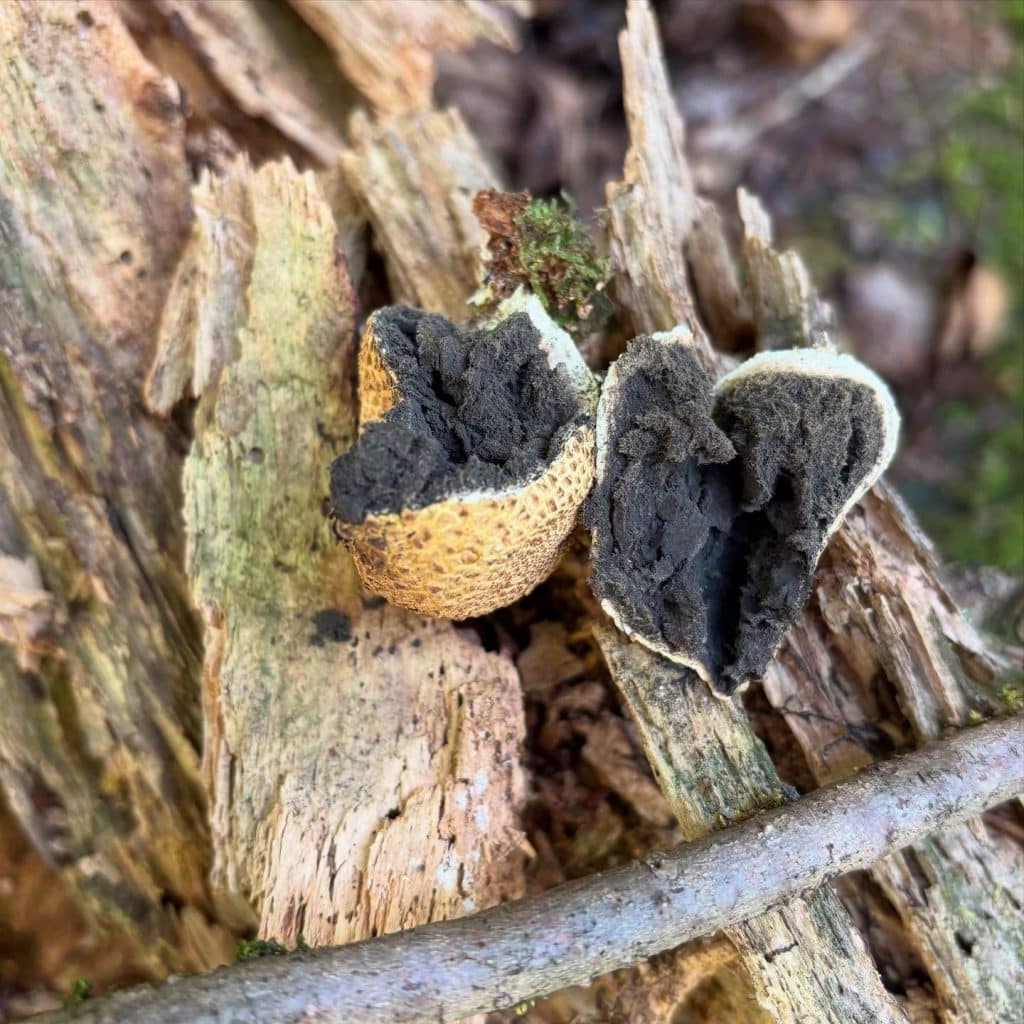
Common earthball (Scleroderma citrinum) is a toxic look-a-like to puffballs. It fruits late summer-early winter in mossy areas with sandy soil. Common earthballs have a tougher exterior than puffballs. The exterior will be a yellow-brown color. Earthballs have a grayish to purplish-black interior. Puffballs should be pure white inside when consumed. Toxic earthballs must be […]
Menispermum canadense – Common Moonseed
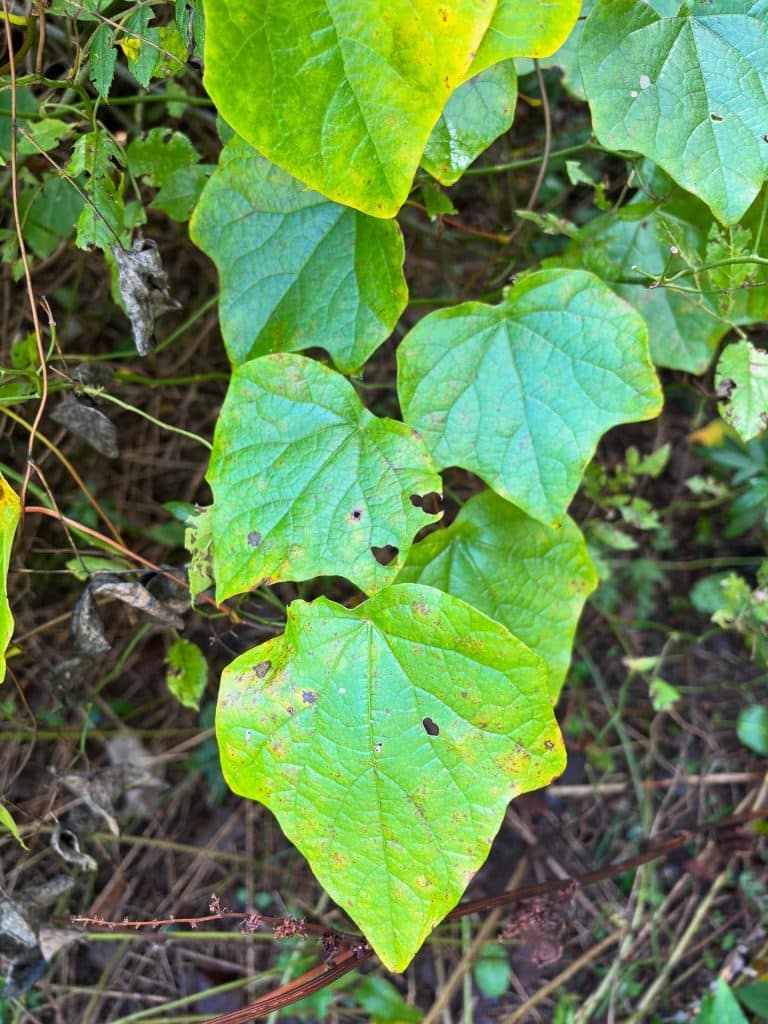
Common moonseed (Menispermum canadense) is a perennial native vine that produces clusters of blue-black berries in the fall. It is a toxic look-a-like to grapes. Common moonseed grows in clearings of woodlands. It can be differentiated from grapes by its smooth leaves and lack of tendrils. Berries have a single crescent-shaped seed inside. Grapes have […]
Juglans nigra – Black walnut
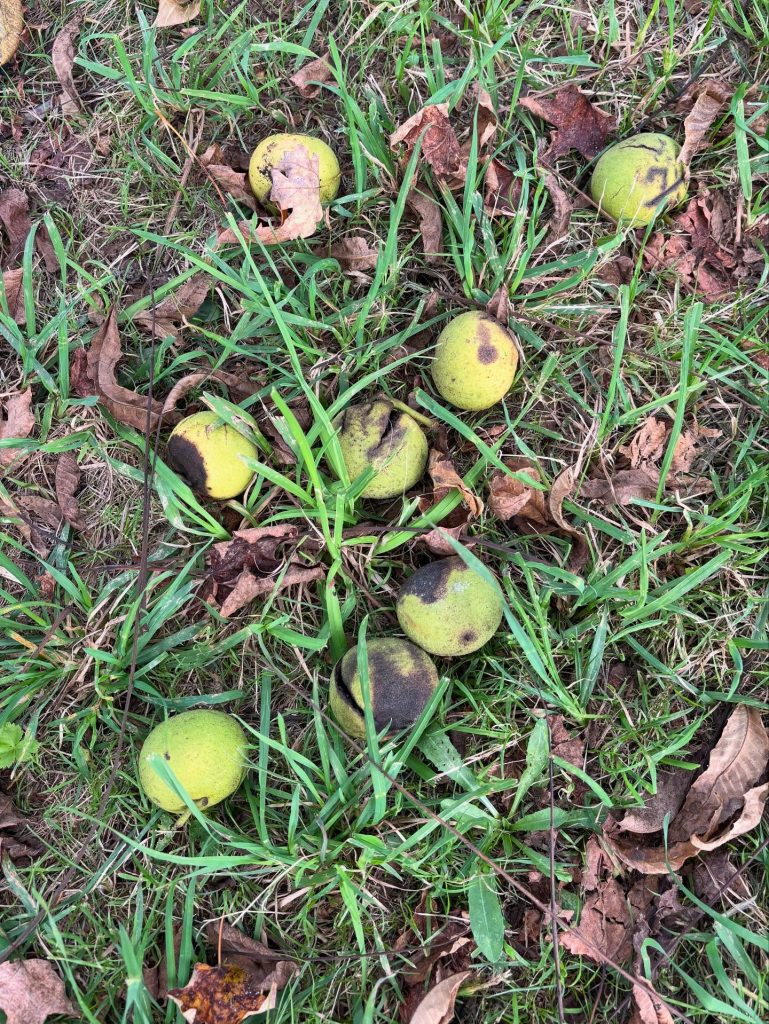
Black walnut (Juglans nigra) is a native tree that produces edible nuts September-October. They are closely related to cultivated walnuts (Juglans regia). They are commonly found in forest edges and along rivers. Trees receiving more sun will produce more nuts. Black walnuts can be identified by their alternate compound leaves which are made up of […]
Phyllostachys aureosulcata – Yellow groove Bamboo
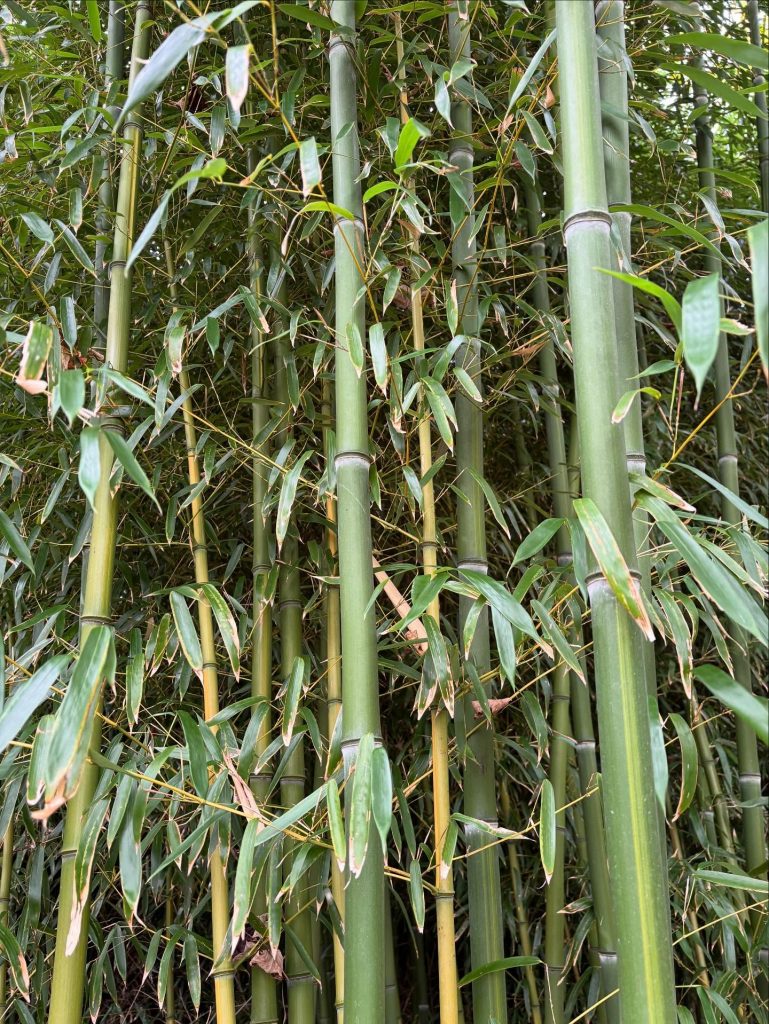
Yellow groove bamboo (Phyllostachys aureosulcata) is a non-native perennial that can grow up to 30 feet tall and can spread aggressively. It was brought here from China for its use in ornamental landscaping but has become invasive in many areas due to its ability to spread rapidly through underground rhizomes. Yellow groove bamboo can escape […]
Quercus alba – White Oak
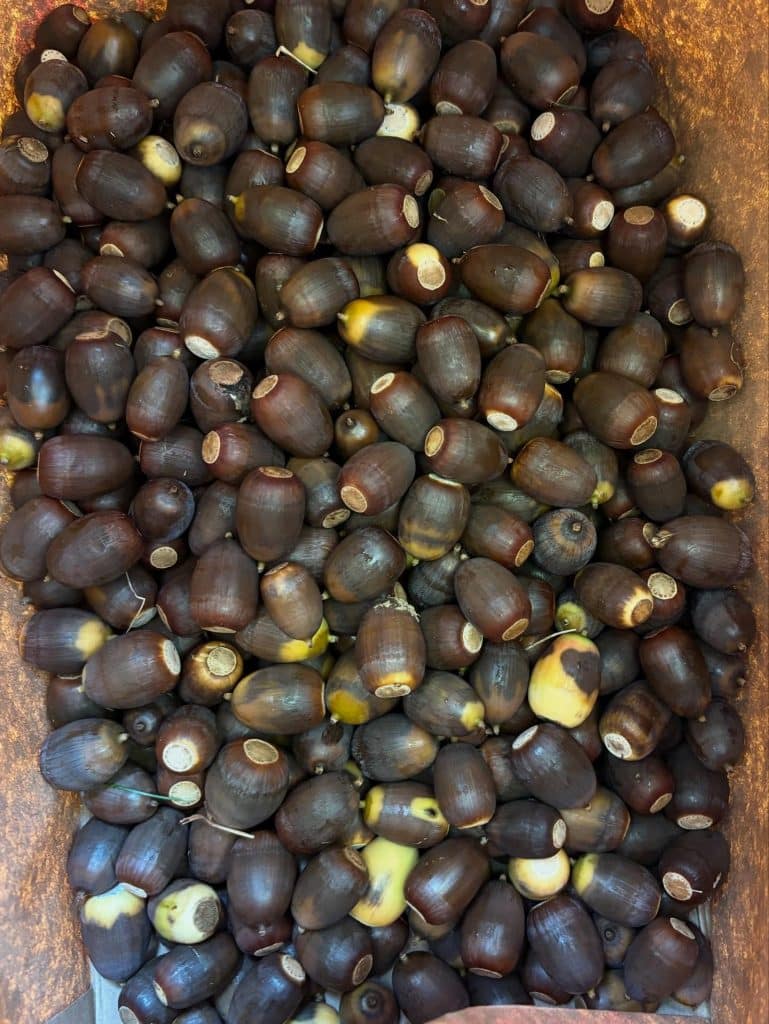
White oak (Quercus alba) is a large native tree with leaves with rounded lobes. White oak acorns develop in one season and fall off the tree in autumn. Red oaks develop in two seasons and tend to be more bitter. Acorns are edible, but high in tannins so must be hot or cold leached before […]
Juglans cinerea – Butternut
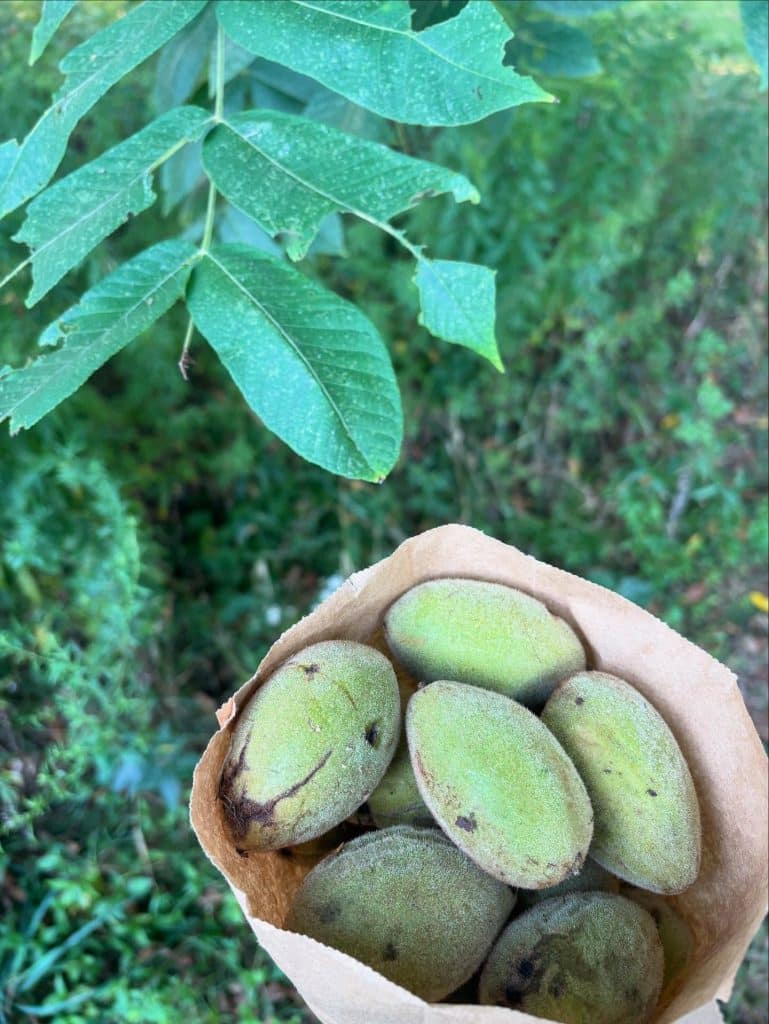
Butternut (Juglans cinerea) is a native tree with edible nuts. It can be found in rich soil and abandoned fields. Populations in Connecticut are decreasing due to a fungal disease called butternut cancer. Butternut, also known as white walnut, can be identified by its compound leaves with up to 19 toothed leaflets. Nuts are encased […]
Vitis labrusca – Fox Grapes
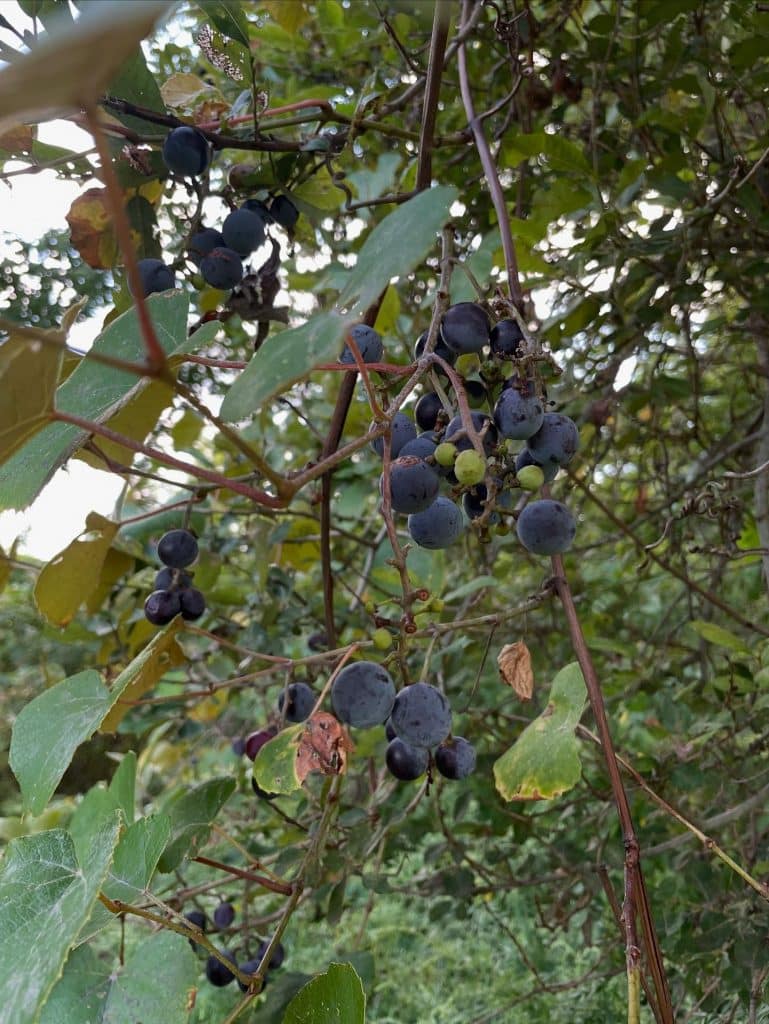
Fox grapes (Vitis labrusca) are our largest native grape species. They are the ancestor to the Concord grape. Fox grapes can be found in partial to full sun at forest edges, woodland clearings, and along rivers. The vine is often seen climbing up trees and fences. Fox grapes can be identified by their leaves which […]
Althaea officinalis – Marsh mallow
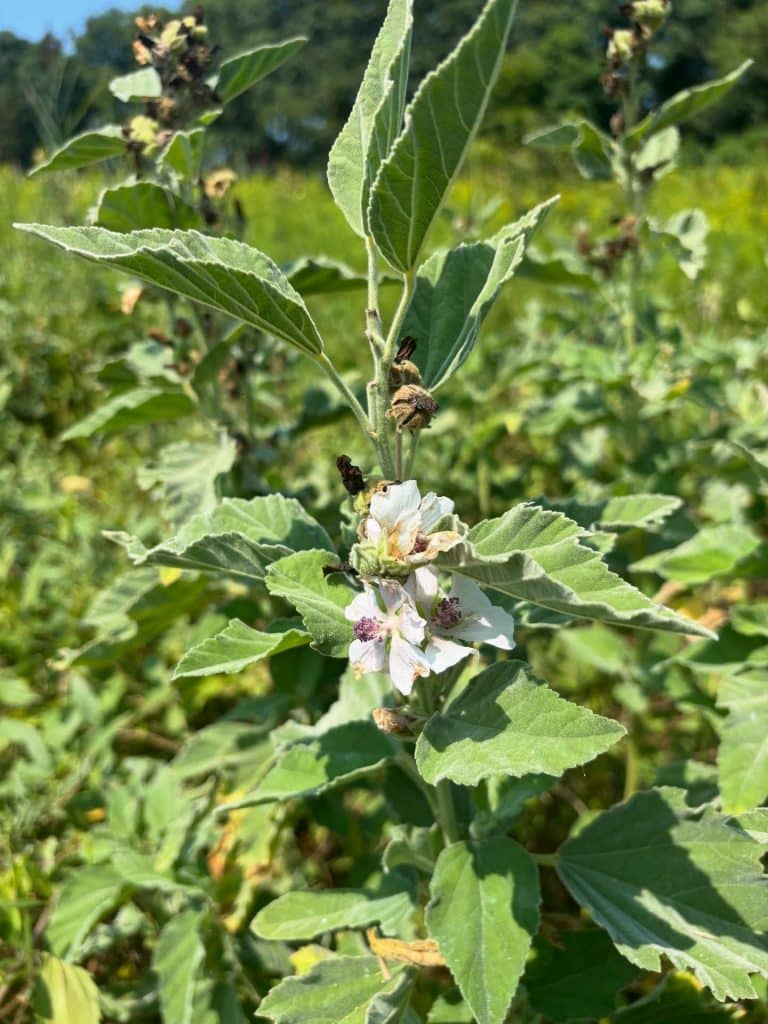
Marsh mallow (Althaea officinalis) is the plant that marshmallows came from. It is an introduced perennial that can be found in marshes and wetlands. Marsh mallow can be identified by its velvety leaves and pale flowers with five petals. Flowers become green, wheel-shaped fruits in early fall. The entire plant is edible, but extremely mucilaginous. […]
Lathyrus japonicus – Beach Pea
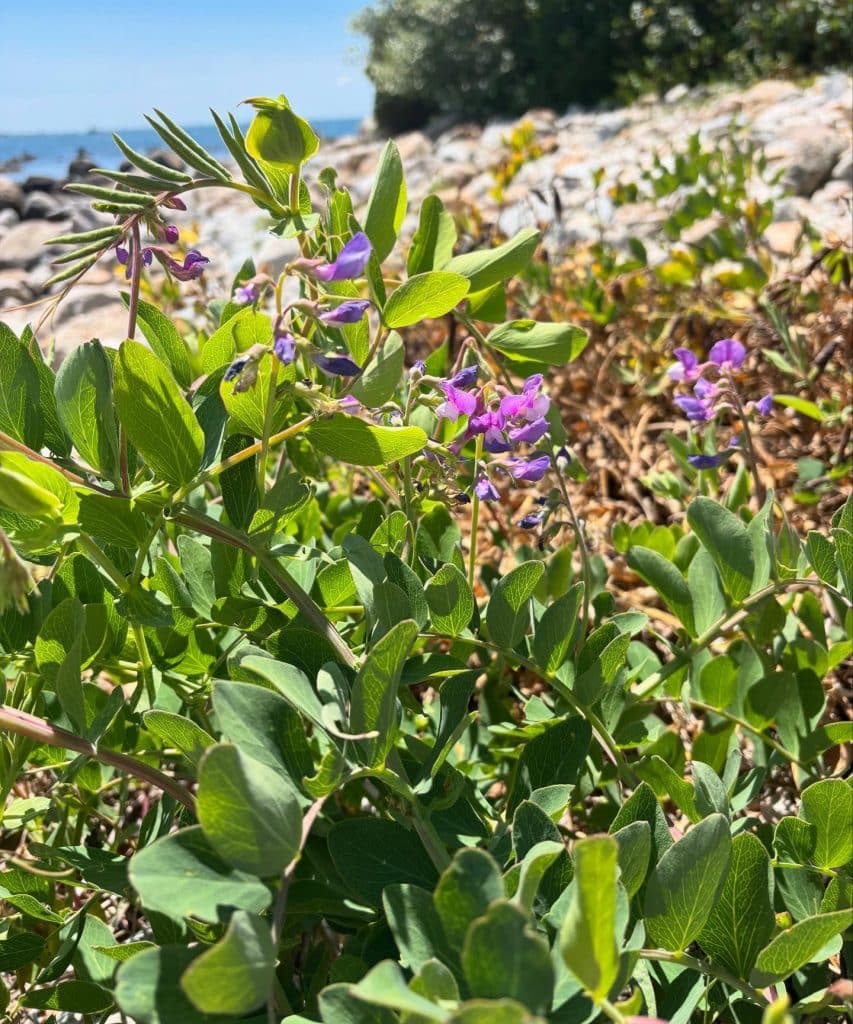
Beach pea (Lathyrus japonicus) is a native perennial with edible pods that are similar to cultivated peas. Beach pea can be found along beaches in New England. The beach pea can be identified by its compound leaves and purple flowers that become pods in late summer. Pods are purplish at first, ripening to green. Shoots […]
Salicornia spp. – Glasswort
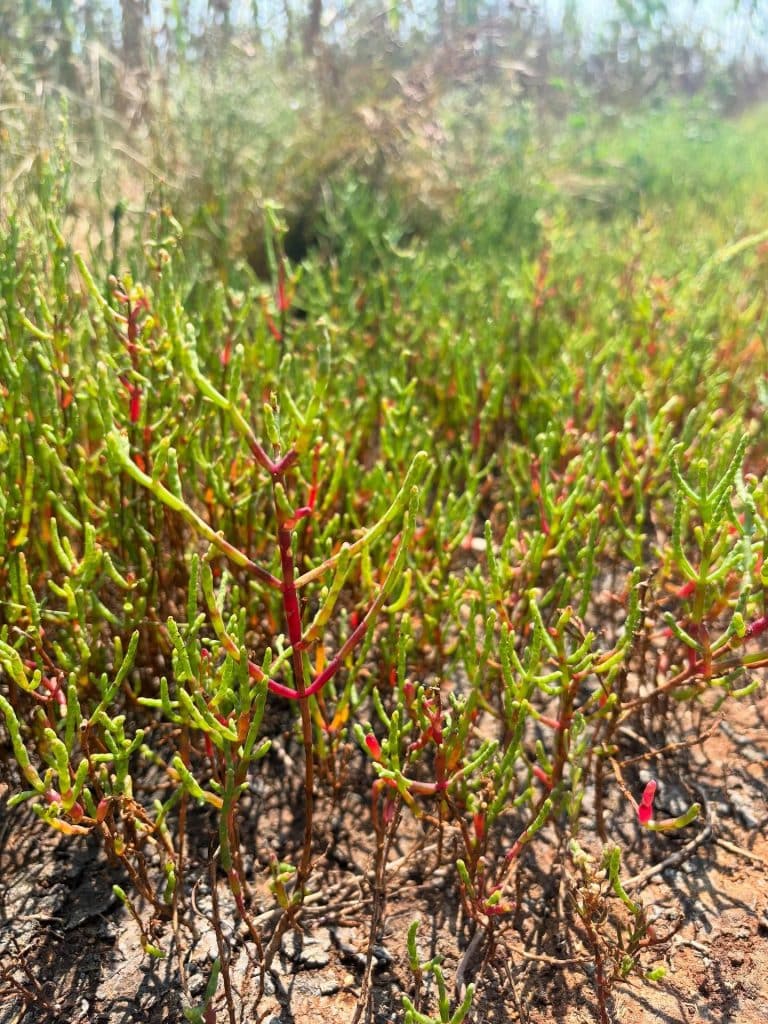
Glasswort (Salicornia spp.) is a native, edible plant with salty, succulent stems. It can be found in salt marshes and coastal areas. Glasswort, also called samphire or sea bean, can be identified by its cylindrical stems that are greenish in the summer, turning reddish in the fall. The tender tips of the stems can be […]
